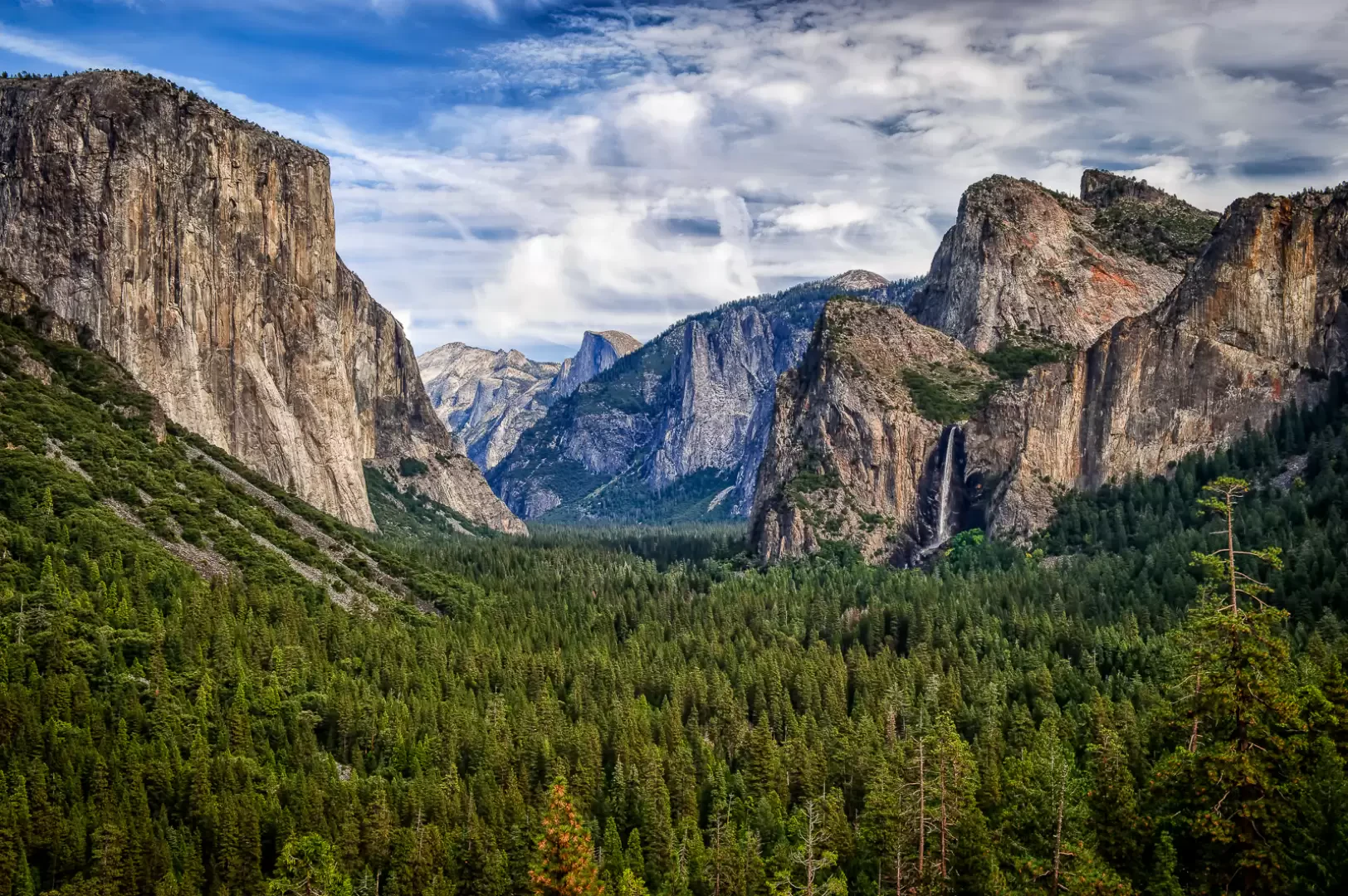Yosemite National Park

Access
The Yosemite area stretches from 600 to almost 4000 metres above sea level, culminating in Mount Lyell (3999 m), which dominates a varied morphology of glacial valleys, great granite walls, waterfalls, alpine lakes, coniferous forests and spectacular groves of giant sequoias, such as Mariposa Grove. Various environments can be identified within it: from the Yosemite Valley, famous for the El Capitan and Half Dome formations, to subalpine forests and high altitude tundra. It is estimated that more than 20% of the Californian flora finds a habitat here, with at least 160 rare species and numerous endemics. The park has an important human history: populated for millennia by the native Miwok people, Yosemite has become in contemporary times a place of experimentation for conservation policies, study of glacial geomorphology and refuge for a diverse fauna that includes bears, cougars, deer, golden eagles and many other species typical of the Sierra Nevada.
Yosemite's unique location and variety of environments make it an ideal destination for hiking, with a marked network of more than 1,300 kilometres of trails, itineraries of various levels, numerous scenic roads and several nature access points such as Hetch Hetchy Valley, Glacier Point and Tuolumne Meadows. Seasonal changes have a strong influence on how you visit: from the heavy snow in winter, which recommends the use of specialised equipment, to the spectacular flowering and flooding of the streams in spring and the foliage effect in autumn. Among the best-known wonders are Yosemite Falls, the highest waterfalls in North America (739 m), Bridalveil Fall, Vernal Fall and the great grassy expanses of Cooks Meadow. Native legends, the artistic and photographic evidence of authors such as Ansel Adams, and the presence of environmental education programmes help to strengthen the link between nature, culture and scientific knowledge in the park.
Introduction
Yosemite National Park is located in the eastern region of California, at the heart of the Sierra Nevada mountain range, and is one of the largest protected areas in the United States in terms of both size and naturalistic significance. It covers an area of 3081 square kilometres and is managed by the National Park Service. The park primarily covers Mariposa County, but also includes territory in Tuolumne and Madera Counties. Established on 25 September 1890, Yosemite stands out as one of America's first national parks, the result of conservationist demands led by naturalist John Muir and supported by the wilderness movement of the late 19th century. In addition to hosting vast wilderness areas protected by federal law, it was recognised as a UNESCO World Heritage Site in 1984 for its rich ecosystems, spectacular glacial forms and historical importance in environmental protection.
Description
The Yosemite area stretches from 600 to almost 4000 metres above sea level, culminating with Mount Lyell (3,999m), which dominates a varied morphology of glacial valleys, large granite walls, waterfalls, alpine lakes, coniferous forests and spectacular groves of giant sequoias, such as Mariposa Grove. Various environments can be identified within it: from the Yosemite Valley, famous for the El Capitan and Half Dome formations, to subalpine forests and high altitude tundra. It is estimated that more than 20% of the Californian flora finds a habitat here, with at least 160 rare species and numerous endemics. The park has an important human history: populated for millennia by the native Miwok people, Yosemite has become in contemporary times a place of experimentation for conservation policies, study of glacial geomorphology and refuge for a diverse fauna that includes bears, cougars, deer, golden eagles and many other species typical of the Sierra Nevada.
Yosemite's unique location and variety of environments make it an ideal destination for hiking, with a marked network of more than 1,300 kilometres of trails, itineraries of various levels, numerous scenic roads and several nature access points such as Hetch Hetchy Valley, Glacier Point and Tuolumne Meadows. Seasonal changes have a strong influence on how you visit: from the heavy snow in winter, which recommends the use of specialised equipment, to the spectacular flowering and flooding of the streams in spring and the foliage effect in autumn. Among the best known wonders are Yosemite Falls, the highest waterfalls in North America (739m), Bridalveil Fall, Vernal Fall and the great grassy expanses of Cooks Meadow. Native legends, artistic and photographic accounts by authors such as Ansel Adams, and the presence of environmental education programmes help to strengthen the link between nature, culture and scientific knowledge in the park.
Information
Year established: 25/09/1890
Managing body: National Park Service (NPS)
Area: 3081 km²
Minimum/maximum elevation: approx. 600 m / 3999 m
Maximum elevation: Mount Lyell (3,999m)
Municipalities concerned: Mariposa, Tuolumne, Madeira
Official website: www.nps.gov/yose/index.htm